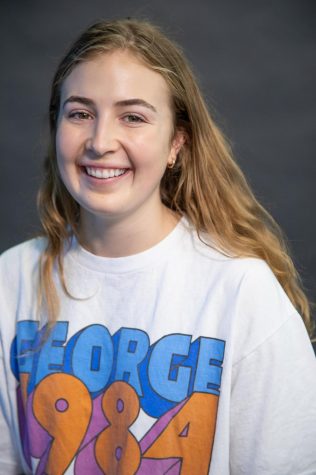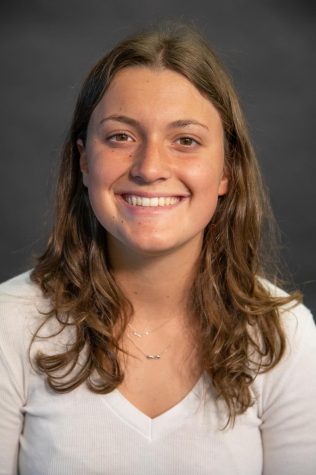In Photos: Senior Danika Biscevic Debuts 1920s-Inspired Fashion Show
Biscevic’s complete seven-piece collection is inspired by 1920s feminist movement. Top Row Left to Right: senior Annabelle Marenghi, senior Mack Ford, senior Jhaydan Davenport, senior Izzy Hinshaw, junior Cassidy Hurwitz. Bottom Row Left to Right: senior Lauren Lawson, senior Valentina Ross.
February 22, 2021
Senior Danika Biscevic debuted her seven-piece fashion show on Monday, Feb. 8 on the Upper School quad for the Interdisciplinary and Personalized Scholars Program (IP). Chairs lined the pathway for teachers and students to sit and watch the show.
Biscevic is no newcomer when it comes to designing and hosting fashion shows. She learned to sew at the age of eight and started designing and creating her own garments just before sixth grade. Biscevic also held two fashion shows during her days at La Entrada Middle School.
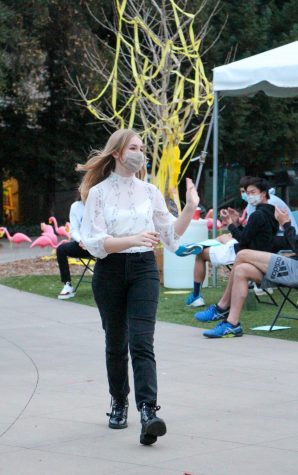
For this specific collection, which Biscevic has been working on since the summer, was inspired by the 1920s feminist movement. “I really wanted to show how far women have come since the 1910s,” Biscevic said. When women gained suffrage in 1919 and as cars became widely available in the early 20th century, women began to experience a newfound freedom for the first time. “[Women] would go to speakeasies and bars and mingle with men, which they hadn’t been able to do before,” Biscevic said.
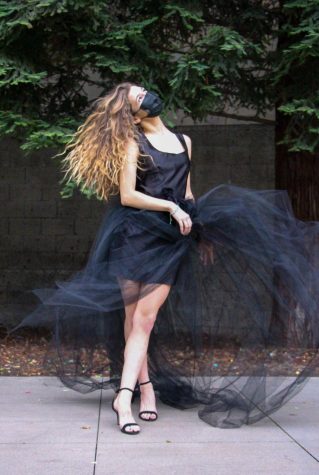
With more freedom in the 1920s, women were able to express themselves more freely when it came to clothing. “Hemlines shot up because they needed to be able to go out dancing. […] Not to mention, they got rid of the corset and instead chose lighter undergarments such as brasiers or hosiery,” Biscevic said. With the emergence of shorter hemlines and nonrestrictive undergarments, women could move around more easily. Biscevic emphasized this historical change throughout her collection by playing with materials such as silk and tulle that moved freely in the wind. According to Biscevic, these softer looks also represented her belief that feminism is still a work in progress.
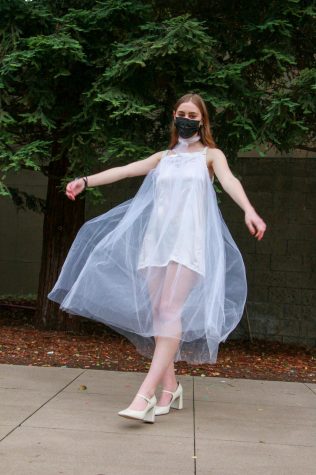
Biscevic wanted to represent how women now had more freedom in who they could marry. Her closing look was a white, flowy dress that was reminiscent of a wedding gown; however, instead of being a traditional long dress, it was cut just above the knee. “Instead of making it an actual dress that you would get married in, it is a dress that you go out and dance in,” Biscevic said. The flowy nature of the dress allowed for movement, which makes it optimal for dancing in, according to Biscevic. “It shows skin instead of being a really traditional confining wedding dress,” Biscevic said.
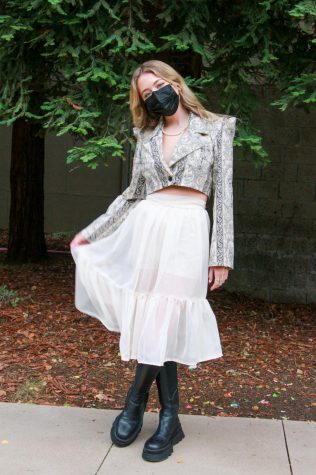
Biscevic also played with more structured silhouettes to celebrate women working. “In one of the pieces, I use a really strong shoulder to represent how women were getting into the workforce,” Biscevic said.
Biscevic wanted her collection to represent feminist women who are comfortable and confident in themselves. “It’s about being comfortable with who you are, no matter if that’s feminine or masculine,” Biscevic said.



